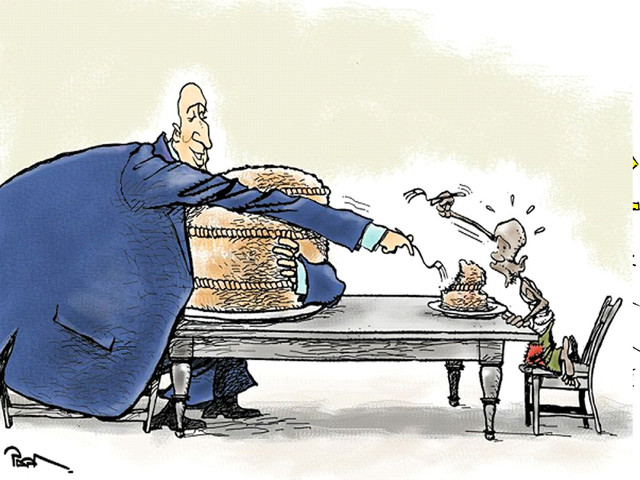Search
Democracy Links
Member's Off-site Blogs
real welfare ...

No doubt you will be shocked to learn, as I was, that it is the rich who benefit overwhelmingly from negative gearing losses, and the superannuation and capital gains discount tax concessions.
Here are some pesky facts.
The main beneficiaries in terms of the size of the negative gearing benefits are the well off. According to NATSEM the top ten percent of income earners get 34.1% of the benefit. Grattan Institute analysis shows that, by adjusting to smooth out the impact of the deduction which cuts many people’s taxable incomes significantly, the top decile before taking into account the loss gets 50% of the tax benefits that flow from negative gearing.
We are not talking small bikkies either. The revenue saved from the losses claimed of between $12 billion and $15 billion is up to about $5bn a year.
An important aspect of the thinking of negatively geared investors is the capital gains tax (CGT) concessions that flow when the property is sold.
Unlike all other forms of gain taxed as income (wages, business profits, interest, rent etc) capital gains are taxed concessionally. If you hold an asset for greater than 12 months when you sell it you only include half the net capital gain in assessable income. In 2015 Tax Expenditure Statement the Treasury estimates this tax expenditure forgoes a bit over $6 billion a year.
NATSEM estimates that after taking account of the impact of the capital gain on taxable income, the top decile gets 54% of the value of all the concessions. If that adjustment isn’t made then the top decile gets 74% of the total value of the monetary benefit.
The superannuation tax concessions tell a similar story.
The Murray Financial Services Inquiry shows that the top decile gets 38% of the superannuation tax concessions. These superannuation concessions are worth about $30 billion a year so the top ten percent get around $12 billion of the revenue forgone.
In other words the benefits of these two tax concessions, super and CGT, and the negative gearing tax losses flow overwhelmingly to the very well off. Abolishing all the concessions for all taxpayers would improve the Budget bottom line by about $40 billion according to Treasury. Abolishing the benefits for the top ten percent of income earners would free up a potential $16 billion or so in revenue a year.
Negative gearing, superannuation and capital gains all show that the richer you are the bigger benefit you get. This is a classic outcome of using the tax system to provide what are essentially disguised grants.
And for those who want to put a figure on it, from memory the top ten percent of income earners are those individual taxpayers earning more than about $120,000 of taxable income a year. A break-down of benefits within that group would I am sure produce further skewing to the very very rich (for example those earning more than $180,000, the top 2% of income earners).
Here are some links to various papers on the issue, including some graphs and charts I tried to copy across but couldn’t, highlighting the points of benefit flows very well.
Matt Grudnoff, Top Gears: How negative gearing and the capital gains tax discount benefit the top 10 per cent and drive up house prices (The Australia Institute April 2015).
Ben Philips, Distributional Modelling of Proposed Negative Gearing and Capital Gains Taxation Reform (NATSEM February 2016)
John Daley and Danielle Wood, Submission to Standing Committee on Economics inquiry into Tax Deductibility (Grattan Institute February 2016. Page 11 has a graph of the before and after negative gearing benefits.
The 2014 Murray Financial Services Inquiry, especially page 138 with its graph of the tax concession benefits flowing overwhelmingly to the top 10%.
ACOSS, Inequality in Australia: A Nation Divided (2015)
The tax concessions Turnbull won’t abolish all overwhelmingly favour the top ten percent
- By John Richardson at 25 Apr 2016 - 11:23pm
- John Richardson's blog
- Login or register to post comments
Recent comments
2 hours 10 min ago
10 hours 50 min ago
11 hours 28 min ago
13 hours 6 min ago
13 hours 16 min ago
13 hours 21 min ago
17 hours 6 min ago
22 hours 17 min ago
22 hours 43 min ago
23 hours 23 min ago